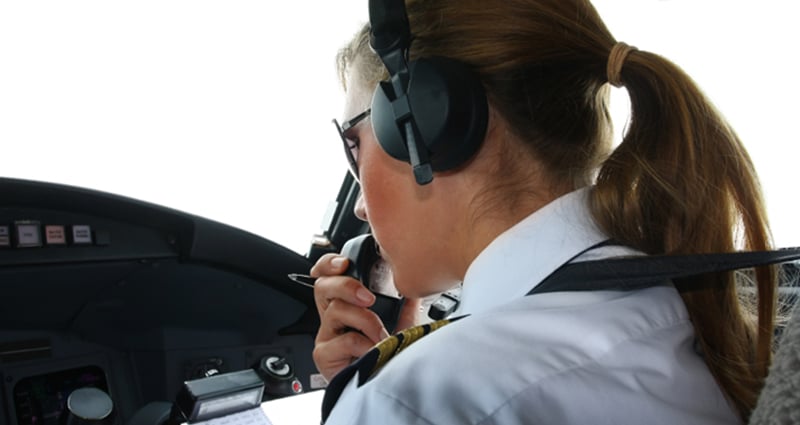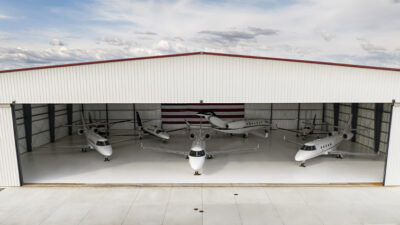From Where I Sit…Flight Deck Automation. Have We Gone Too Far?

Our cockpits continue to be increasingly automated. Autopilots, flight directors, flight management systems and electronic flight information systems (EFIS) glass displays are designed to reduce fatigue and allow us to devote cognitive resources to the big picture during high workload phases of flight.
From where I sit, automation solves some problems, but it creates the potential for a new set of cockpit hazards. Basic flying skills can be weakened, and poor systems knowledge can lead to dangerous errors. Overdependence on automation continues to be cited as a concern by the FAA and NTSB. Experienced pilots are allowing their hand flying skills to deteriorate. In fact, pilots may never develop advanced stick and rudder and mental math skills if they fly highly automated (glass) cockpits from their first solo. Fortunately, there is a simple way to reduce the risks associated with this hazard. Hand-fly your airplane whenever it is safe and appropriate to do so.
How often are you turning your automated systems off in benign conditions with the intent to maintain your stick and rudder (and instrument) skills proficiency? We need to practice doing it the hard way often enough so that those skills are never in doubt. Automated systems do fail, albeit rarely. And they can fail at very inconvenient times—like when the weather at your destination is something less than CAVU. Do you want your first attempt in years to fly an approach to minimums on the backup instruments to be under actual instrument conditions? Not me!
Another hazard is insufficient automated navigation systems knowledge. Incident reports indicate an increasing number of significant altitude and course deviations, some from deterioration of stick and rudder skills, but a majority from a lack of knowledge or discipline in use of cockpit automation. This is a whole new way of “getting behind the aircraft.” Have you heard or read (or said) “I don’t understand why the airplane didn’t start descending to make that crossing restriction, I armed the VNAV button?”
To reduce such risks, we must focus more energy on training and require pilots to demonstrate automation excellence. When I received my first civilian type rating, there was no requirement to demonstrate proficiency in use of the flight management system—you didn’t even need to turn it on to pass the type ride. At that time, there were few, if any, advanced GPS-based departure procedures or arrivals and none that provided both lateral and vertical guidance. All instrument procedures for which we were authorized could be executed by manually tuning a navaid and setting and flying the needles: it was simple for any experienced instrument pilot.
Today, our aircraft training programs should integrate full use of all the available automation. It seems that the newer your aircraft, the more likely the classroom curriculum will include use of an avionics training device prior to flight training in the simulator. This is a good thing. Given that use of the automation is integral to most of our line operations, we must demand that our training programs ensure mastery of those systems.
Our company works closely with our training vendor and regulators to modify ground, simulator and aircraft training to address specific automation issues. Our voluntary safety reporting system and feedback from our check airmen and FAA inspectors provides significant data that we use to justify these changes. Additionally, we evaluate and modify company standards (standard operating procedures, checklists, callouts, maneuver profiles, etc.) where the feedback suggests.
Has the industry’s progression toward cockpit automation gone too far? Clearly, as we add levels of automation designed to reduce workload and improve situational awareness, there are unintended negative consequences—new hazards. I contend that we have not gone too far. Automation in the cockpit is a wonderful thing, but from where I sit, our training and proficiency, including stick and rudder skills, need to keep up with the technology.

Flight Options LLC provides fractional jet ownership services, aircraft leasing and management and the JetPASS membership program.
http://www.flightoptions.com/
© 2025 Flight Options, LLC. All Rights Reserved.
Next ArticleRelated Posts

Emerging Security Threats in Business Aviation: Activism and Down-Route Risks
Security incidents affecting business aviation do not need to involve violence to have an operational impact. A protest delaying crew movements, blocking access to a hangar or resulting in an unauthorized photograph of a sensitive client can all trigger reputational, financial or compliance concerns for operators.

Navigating Geopolitical Uncertainty Using Business Aviation
Bigger business jets mean bigger fuel tanks, longer trips, more border crossings, and bigger wallets! With an equipment upgrade also comes the requirement for a knowledge upgrade.

